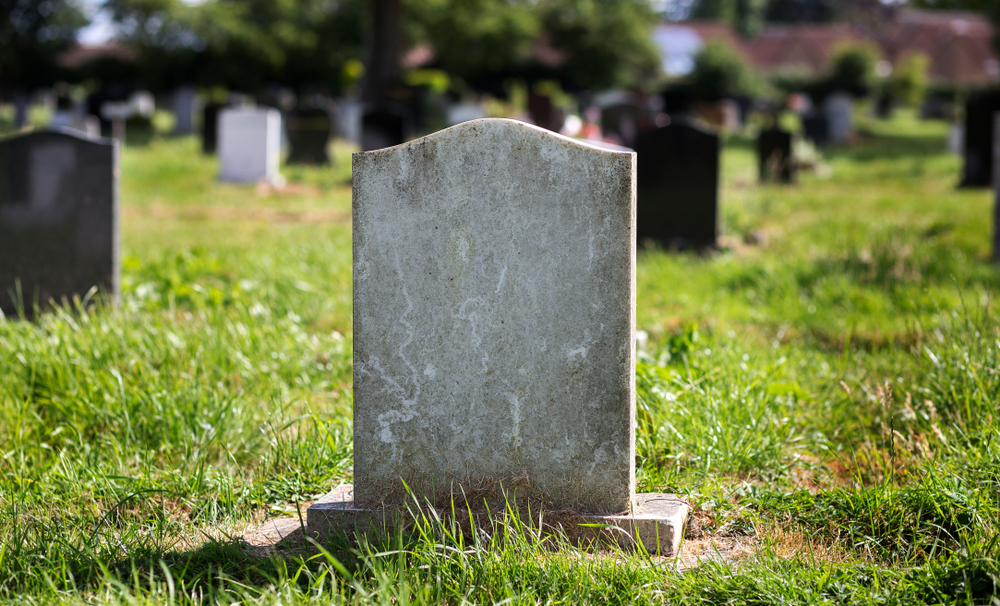
For most objects that people buy, it's clear who owns them. If a person purchases an item and it's stored in their house, there is very little doubt as to who owns that item. Headstones, however, can seem different. The deceased's estate often funds their purchase, and they're located in a shared space. Because of this, there is a lot of confusion over who owns headstones.
Who Controls a Headstone?
A headstone can only be installed by a person who is legally responsible for the deceased. In most cases, this is the next of kin, but a person can designate someone else to be in charge of their burial arrangements before their death. For example, many people designate their executor as the person or entity that can make decisions regarding their final arrangements. However, it is important to note that the person who has authority over the deceased's final arrangements is not always the same person who is the executor of their estate. It is common for a person other than the executor to be in charge of final arrangements.
However, without any paperwork to state otherwise, the final arrangements for a deceased person will become the responsibility of the deceased's next of kin. This person has the authority to decide on the funeral, burial arrangements, and headstones.
Specifically, this person is the individual who can decide how the headstone will be designed, placed, and cared for. This person is also legally responsible for the expenses associated with the headstone.
In cases when a deceased has no next of kin or the next of kin refuses to take responsibility for the remains of the deceased, there are ways for other people to get the right to control what happens to the remains. If you need to know more about this procedure, talk to a lawyer or the funeral home that has the remains of your loved one for guidance on what to do next.
What Decisions Can Be Made About a Headstone?
Once it has been determined who is in charge of or responsible for handling the final remains of a deceased person, that person typically has complete responsibility for what happens to the remains. This means that they can choose the time and place of the funeral, make all of the arrangements, and direct where and how the body will be buried. Part of these decisions is determining the look and placement of the headstone.
It's important to note that while it is common for multiple family members and friends to have opinions about the headstone, the ultimate decision lies with the person responsible for the remains of the deceased. This person is the only one who can make decisions, and all service providers connected to the final arrangements must take direction from this person. Unless a court order is obtained, it is generally not possible to "override" the decisions that this individual makes.
However, there are limits to what can be designed and implemented when it comes to a headstone. Most private and public cemeteries have rules about headstone size, shape, and placement. Many also reserve the right to refuse a headstone if it is considered in poor taste.
Be aware that there are time limits when a headstone can be placed. Due to production schedules at the stoneworker, engraver, and cemetery, it's often possible to have several months between the time a body is buried and a headstone is placed. During this time, some minor alterations can be made, but it is not guaranteed that it will be possible to make changes.
The headstone can only be placed if someone has a grant deed for a cemetary plot. In some cases, this is a relatively simple process. The placement process is straightforward if the grant deed is held by the same person paying for and ordering the headstone. In some cases, however, grant deeds for cemetery plots are held by someone other than the one making decisions about the headstone. In these cases, both parties are strongly urged to find a reasonable solution to any conflicts, as disagreements about the headstone can severely delay its placement.
Be aware that it is impossible to place a headstone without a grant deed to the cemetery plot, even if the individual holding the grant deed refuses to take responsibility for the headstone. In cases where a compromise between both parties cannot be reached, obtaining a new cometary plot may be necessary.
Who Ultimately Owns the Headstone?
Once the headstone is placed, its ownership will vary based on the chosen cemetery's rules. Nearly all cemeteries will insist on placing the headstone themselves; a small fee is usually attached to this. After it is in place, ownership follows the terms of the grant deed. Some cemeteries take immediate possession of the headstone. This gives them the legal right to perform cleaning and maintenance and can be an ideal solution for family members wondering how they will manage the upkeep. Other cemeteries will allow the estate or executor to maintain ownership for a set period, allowing that person to make small future changes if necessary. These agreements are often found in the deed restrictions of family burial plots; headstones can be moved or updated without interference from the cemetery. Eventually, however, the ownership of the headstones will be transferred to the cemetery.

